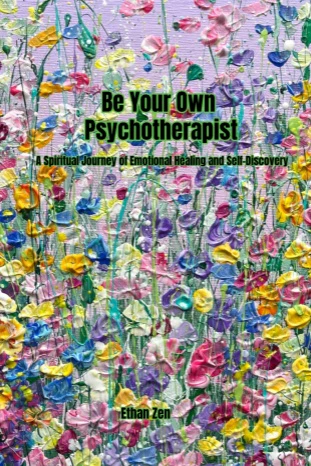The Meditation of "Unifying the Mind"
In the “Bamboo Window Notes,” Master Lianchi wrote about the “Fragrance of Flowers,” stating that although the scent of lilies in the courtyard can be faintly smelled during the day, it becomes particularly strong in the quiet of the night. This is not because our sense of smell is dull during the day and sharp at night, but rather due to the daytime’s hustle and bustle, the complexity of the environment, and the need for the eyes to observe things and the ears to discern sounds, which affects the sense of smell and prevents it from focusing. Zhuangzi said, “When thoughts are not scattered, the spirit can be focused as one.” This is indeed the case!
What does “unifying the mind” mean?
Master Lianchi used the “Fragrance of Flowers” to illustrate that no matter what one studies or does, only through concentration and dedication can high quality and high efficiency be achieved.
The Master also said: Calligrapher Mi Fu believed that to learn calligraphy, one must be fully dedicated to it and have no other special hobbies, in order to achieve success. I have also heard that in ancient times, those skilled in playing the qin (a traditional Chinese musical instrument) would say that one should only practice two or three pieces in order to enter into a wonderful realm. Although these words are common, they illustrate important principles. The “Buddha’s Last Instruction Sutra” states, “Unifying the mind in one place, nothing is left undone.” Therefore, with a divided mind, nothing will be achieved; but with a single-minded focus, samadhi can be quickly attained. Those who practice Chan meditation and recite the Buddha’s name must understand this.

How to “unify the mind”?
The Buddha taught us many methods, the most familiar of which is “reciting the Buddha’s name.”
When practicing, Master Hanshan recited as follows: “Uttering the sound of ‘Amitabha Buddha,’ clearly and distinctly, continuously in the mind, like a thread through a pearl. It is like the end of an arrow, with no gap in the middle. In this way, exerting effort to rely on concentration, in all situations, not being led astray by external circumstances. In daily activities, there is no confusion or disorder; in waking and sleeping, there is no difference. When facing the end of life, the mind remains undisturbed; this is the time to transcend and be reborn in the Pure Land. If one only recites the Buddha’s name verbally, but the mind is impure and delusions remain, it is said that the recitation of the Buddha’s name will not be effective. Even if one continues this for three lifetimes and sixty kalpas, there will be no liberation.”
“Mindfulness of Breathing” is also an effective method of “unifying the mind.” The “Great Mindfulness Sutra” records that a monk, when going to the woods, under a tree, or to a quiet place, would sit in the full lotus posture, keeping the body upright, and place the mind in front of him. He would only be mindful of the inhalation and exhalation. When the inhalation is long, he knows that it is long; when the exhalation is long, he knows that it is long. When the inhalation is short, he knows that it is short; when the exhalation is short, he knows that it is short… Training in this way unifies the mind.
“Right Mindfulness and Right Understanding” is an excellent method for training in “unifying the mind” in daily life. In numerous scriptures, the Buddha instructs disciples: When walking, know that you are walking; when standing, know that you are standing; when sitting, know that you are sitting; when lying down, know that you are lying down. Know the actions of the body in this way. Whether coming or going, looking straight ahead or to the side, bending or stretching, relieving oneself, sleeping or waking, sitting or standing, speaking or being silent, in all these activities, always maintain a unified mind; this is called a unified mind.

What are the benefits of “unifying the mind”?
For monastics, training in “unifying the mind” and focusing on a single object is to cultivate concentration. Relying on this concentration, they can observe the arising of phenomena inside and outside the body and mind, and see the true nature of all worldly phenomena, giving rise to profound wisdom, realizing that “the five aggregates are all empty” and understanding that “all phenomena are illusory.” Gradually, this changes the way ordinary beings view the world, forming a completely new cognitive model, ultimately completely eliminating afflictions and freeing themselves from all suffering.
For laypeople, the benefits of training in “unifying the mind” are also evident. In modern society, the pace of life is fast, and work pressure is high. Faced with intense competition, the ability to endure psychologically gradually weakens, and both body and mind become easily fatigued, leading to many psychological disorders such as neurasthenia, anxiety, phobias, and depression. Training methods such as “reciting the Buddha’s name,” “observing the breath,” and “right mindfulness and right understanding” can help the mind focus on a single object, enter a state of calm and tranquility, release internal stress, and promote mental and physical health.
Furthermore, long-term busyness and tension can also lead to decreased memory, lack of creativity, and scattered attention. Practicing “unifying the mind” will have a significant calming effect. It can help empty the mind and body, enhance concentration, stimulate creativity, cultivate a calm wisdom, and thereby improve the quality of life, work, and learning.







